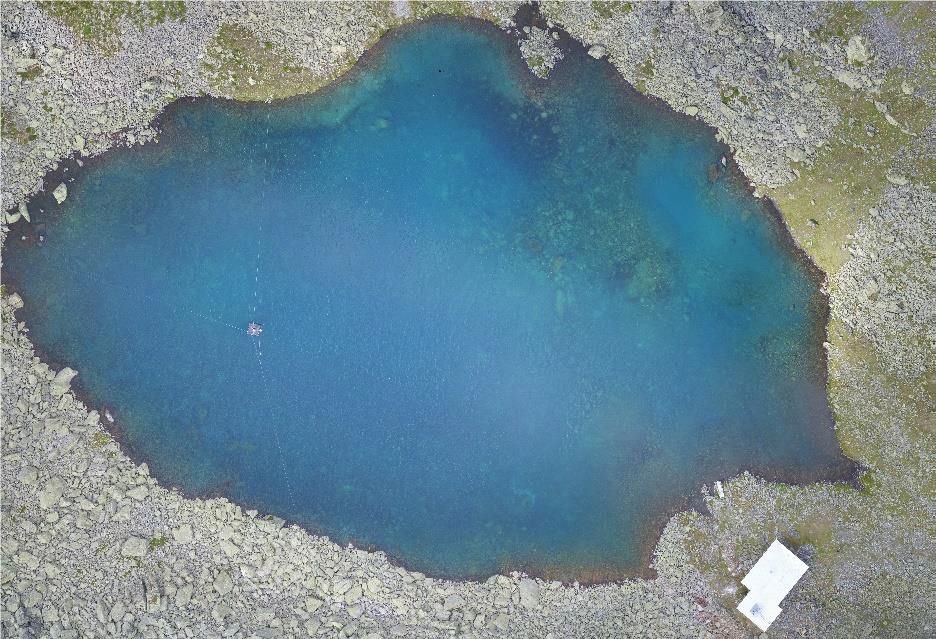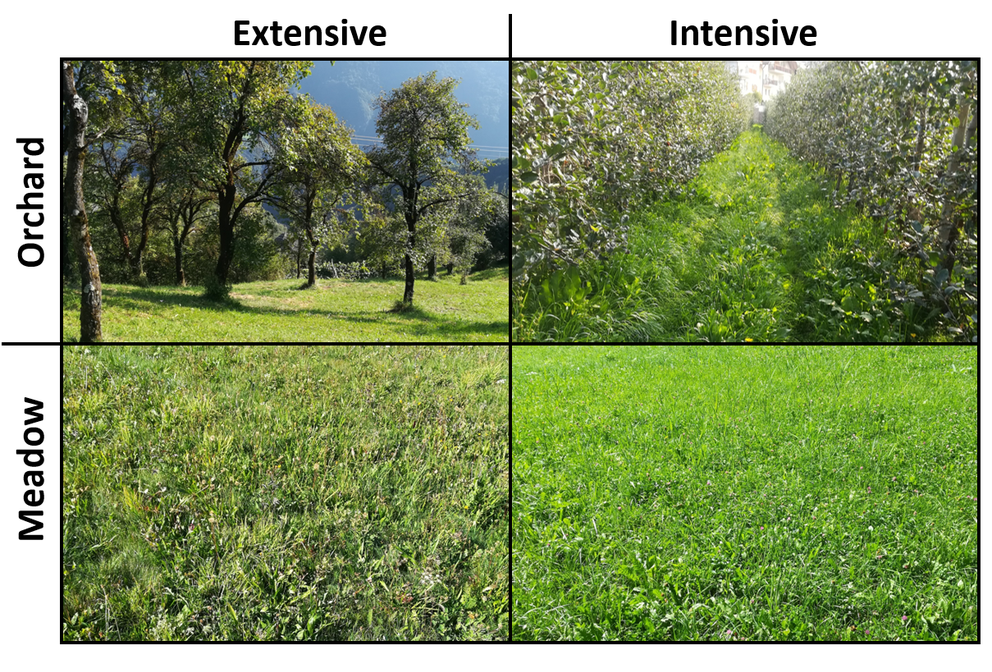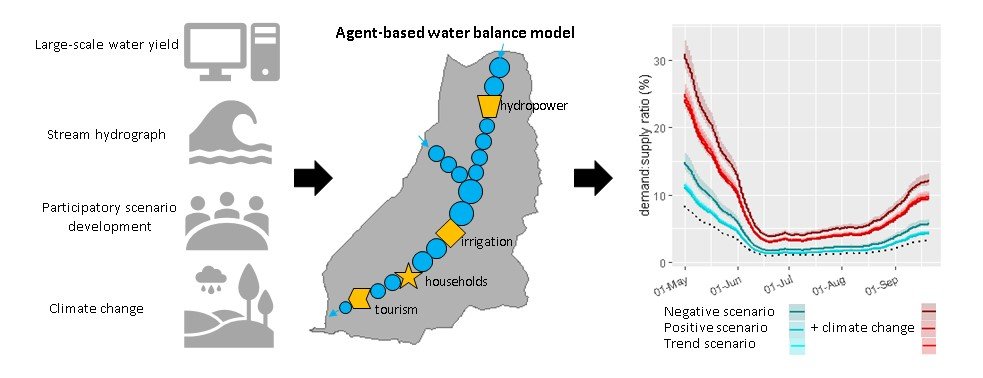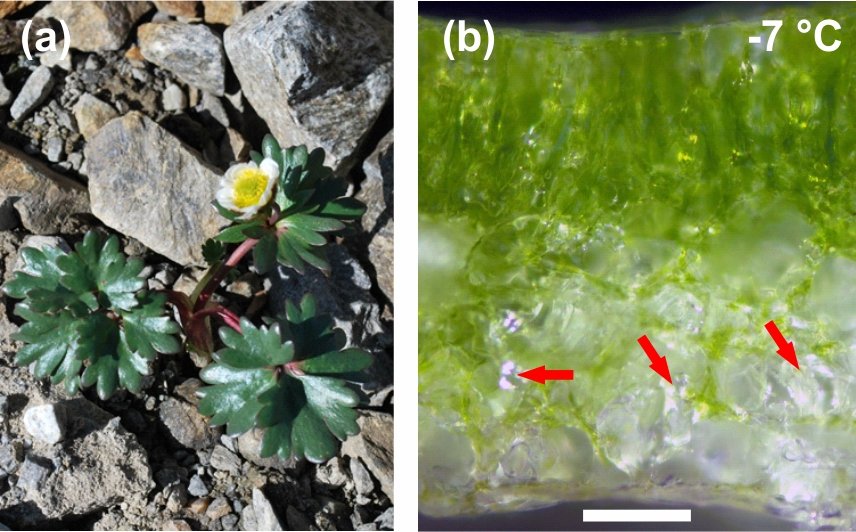DP ABGC Student Paper Award 2020
A DP Student Paper Award 2020 was awarded to Pablo Aguilar, Elia Guariento, Lisa Huber and Matthias Stegner. Find a summary for each of the awarded papers below.
Community assembly in lake bacterioplankton
It is generally recognized that both deterministic (e.g., environmental variables) and stochastic processes (e.g., dispersal) drive natural microbial communities' structure. However, it is unclear what is the relative contribution of each process and how they may change over time in lakes. We investigated the importance of deterministic and stochastic processes based on the bacterial communities' analysis in one alpine oligotrophic (Gossenköllesee) and in one subalpine mesotrophic lake (Piburgersee) over two consecutive years.
We demonstrated that in both lakes, homogeneous selection (i.e., a deterministic process) was the most important assembly process at the annual scale, despite differences in diversity and temporal variability patterns between both aquatic ecosystems. However, in Gossenköllesee, homogenizing dispersal (i.e., a stochastic process) was the most important assembly process at the short‐term (daily and weekly) sampling scale. Alpha diversity differed between lakes, and the bacterial community's seasonal stability was more evident in the oligotrophic lake than in the mesotrophic one.
On a quantitative basis, our study validates the importance and dominance of deterministic processes in structuring bacterial communities in freshwater environments over long time scales.

| A |
|---|
| Aerial view of Gossenköllesee. Photo: Martin Schletterer |
For his paper in the journal Molecular Ecology DP-member Pablo Aguilar received the DP ABGC Student Paper Award 2020.
Aguilar A and Sommaruga R (2020) The balance between deterministic and stochastic processes in structuring lake bacterioplankton community over time. Molecular Ecology 29:3117–3130, https://doi.org/10.1111/mec.15538
Meadows and orchards intensification alters soil fauna communities and reduces overall diversity
Biodiversity loss is currently mainly caused by land use change and management intensification, both on and beneath the soil surface. However, the diversity of organisms living in soils is an essential provider for ecosystem functions and services (e.g. food production and security).
We investigated management intensity in apple orchards and meadows, and it’s influences on soil macro-invertebrate communities using a comparative approach. We compared soil fauna assemblies from traditional low-input sites with respective intensively managed ones, using a factorial design. The study comprises 24 fields in six locations in South Tyrol.
As expected, the taxonomical richness and diversity resulted lower in both intensive management types. Extensive management of both types revealed similar communities, while intensification led to substantial differences both between the meadows and orchards and compared with the respective extensive management form.
From these results we conclude that intensification severely alters the soil fauna community and biodiversity in general, however, the direction of these changes is governed by the management form. In our view, extensive management, traditional for mountain areas, favors soil fauna communities that have adapted over a long time and can thus be viewed as a sustainable reference condition for new production systems that consider the protection of soil diversity in order to conserve essential ecosystem functions.

| A |
|---|
| Pictures of sampling fields arranged to depict the factorial design replicated on each of the six sampling location. |
For his paper in the journal Agronomy DP-member Elia Guariento received the DP ABGC Student Paper Award 2020.
Guariento E, Colla F, Steinwandter M, Plunger J, Tappeiner U, Seeber J (2020) Management intensification of hay meadows and fruit orchards alters soil macro-invertebrate communities differently. Agronomy 10(6): 767. https://doi.org/10.3390/agronomy10060767
Agent-Based Modelling of Water Demand and Supply in the European Alps
The European Alps are known as the ‘water towers of Europe’. But as climatic and socioeconomic changes influence both water supply and demand, there is an increasing need to manage this limited and valuable resource properly to avoid user conflicts and water scarcity. Two major challenges emerge when assessing water scarcity in the Alps: Firstly, mountainous regions are very heterogeneous regarding water availability and demand over space and time, and therefore water scarcity assessments need to be done at low temporal and spatial scales. Secondly, the tight coupling of the natural and the social sphere necessitate an integrative approach considering their dynamics and interactions.

| A |
|---|
| For the application of the agent-based water balance model to the Matsch valley, annual runoff data by a large-scale water yield model were refined by a local stream hydrograph. Data for scenario modelling was gained from participatory scenario workshops and climate change predictions from literature. |
In order to meet both these requirements, we applied the agent-based water balance model Aqua.MORE to the LTSER site ‘Mazia/Matsch valley’, in the Province of Bolzano/Bozen (Italy). We estimated the water supply by refining the annual runoff data provided by the InVEST water yield model for within-year variations. We assessed six scenarios for the period of 2015 to 2050: three different socio-economic policy pathways, both alone and in combination with a climate change scenario. In all scenarios, the water demand:supply (D:S) ratio continuously rises from 2015 to 2050 and highest D:S values are prognosed at the beginning of the irrigation period in May. Although the limited number of days with D:S ratio exceeding 20% in our study does not represent a high threat to the water resources in the Matsch valley, we reinforced the importance of analyzing water scarcity at the daily temporal scale to not to overlook these critical days. Our findings can be used to stimulate management processes and stakeholder dialogues for sustainable watershed management.
For her paper in the journal Science of the Total Environment DP-member Lisa Huber received the DP ABGC Student Paper Award 2020.
Huber, L., J. Rüdisser, C. Meisch, R. Stotten, G. Leitinger, and U. Tappeiner. 2020. Agent-based modelling of water balance in a social-ecological system: A multidisciplinary approach for mountain catchments. Science of the Total Environment: 142962. doi: 10.1016/j.scitotenv.2020.142962
How to survive freezing: Ice management strategies of a nival plant species
In the nival zone the snow free time period is short (2–3 months). During this time, Ranunculus glacialis grows and reproduces successfully. We investigated how the challenging environmental conditions are survived from plant to cellular level at a natural growing site at Mount “Kleiner Isidor” in the Central Alps of Tyrol.
We found that atmospheric temperatures did not mirror leaf temperatures. Daily leaf temperatures dropped below zero at a rate of 56%, whereas air frosts occurred only at 17%. Leaf freezing occurred even when air temperature was above 0 °C. Ice nucleation was observed at average at −2.6 °C and started usually independently in each leaf. As the shoot is deep-seated in unfrozen soil we suggest it to act as an efficient ice barrier between leaves. Upon tissue ice formation all mesophyll cells were immediately subjected to freezing cytorrhysis; below −3 °C the cell area was reduced at an average of 48%. Huge ice masses formed in intercellular spaces of the spongy parenchyma. After thawing, photosynthesis was unaffected regardless if ice had formed. Cell walls were pectin rich and triglycerides occurred particularly in the spongy parenchyma.
Ranunculus glacialis defies unfazed recurrent freezing events during the active growing and reproduction phase. Many lowland and crop species are sensitive to freezing throughout development. As due to climate change, devastating spring frost events are anticipated to increase, alpine plants with a high frost survival capability may come into focus of research interest, as they can serve as perfect model organisms for freezing tolerance during active growth.

| A |
|---|
| Ranunculus glacialis at a natural growing site on 3185 m a.s.l (a). Huge ice masses (some are indicated by red arrows) are accommodated at sublethal freezing temperatures in the intercellular spaces and cells respond to the presence of ice by severe freezing cytorrhysis (b). Bar width: 100 µm. |
For his paper in the journal International Journal of Molecular Sciences DP-member Matthias Stegner received the DP ABGC Student Paper Award 2020.
Stegner M, Lackner B, Schäfernolte T, Buchner O, Xiao N, Gierlinger N, Holzinger A, Neuner G (2020) Winter nights during summer time: stress physiological response to ice and the facilitation of freezing cytorrhysis by elastic cell wall components in the leaves of a nival species. International Journal of Molecular Sciences 21:18. https://doi.org/10.3390/ijms21197042
